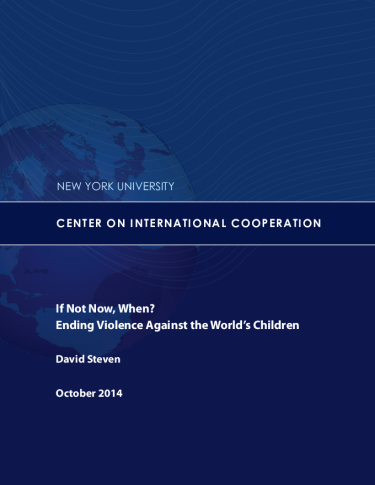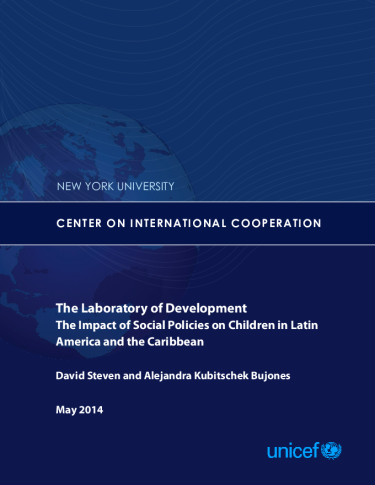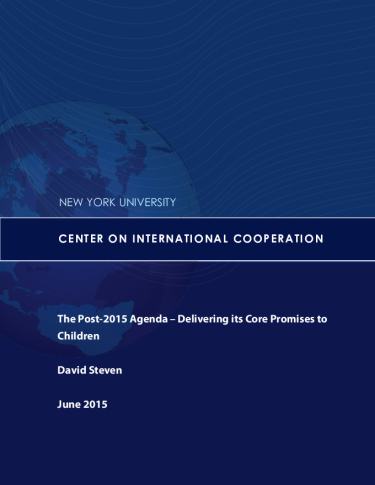Since the Open Working Group on Sustainable Development Goals published its proposal for sustainable development goals for 2016 to 2030, there has been much discussion about whether 17 goals and 169 targets are too many.
This debate is important, but behind it lurks another important question. Are governments and international organizations taking seriously the challenge of delivering the new goals or are we engaged in time-consuming argument about a set of empty promises?
Implementation of the new agenda begins in only 437 days. There are then just 5,479 days to meet targets that are many times more ambitious than the MDGs. To have any chance of success, we have to hit the ground running and have made substantial progress by 2020.
In a new paper published today, CIC explores the delivery challenges associated with one of the proposed targets: end abuse, exploitation, trafficking, and all forms of violence and torture against children.
This target adds a dimension to the post-2015 agenda that was missing from the MDGs, which focused on child survival and development, but which did too little to protect the world’s children from unacceptable levels of violence and abuse.
In recent years, the world has finally started to wake up to the scale of this problem.
Malala was not just denied an education, she was shot by the Taliban when she tried to go to school. In Nigeria, 219 girls were kidnapped by Boko Haram for the same reason, with many apparently forced into marriage by their kidnappers.
And as Leah Kreitzman argues “Huge gains have been made since 2000 in keeping children alive to their fifth birthday, but these risk being offset by stubbornly high murder rates in adolescence. For example, in Brazil nearly 35,000 under-fives have been saved, but over the same period, more than 12,000 lives of adolescents were lost to homicide.”
We have also been forced to admit how, time and again, societies have sided with the perpetrators not the victims of violence.
My own country, the United Kingdom, has been rocked by scandals (Yewtree, Rotherham, Cyril Smith) that show how those in authority are prepared to turn a blind eye as children are trafficked, raped, and violently abused.
Impunity is not confined to the UK. Think of the terrible scandals in India or in the Catholic Church, for example. These are just the tip of an iceberg. Violence is a leading threat to children’s wellbeing and health, but unlike other epidemics, we continue to deal with it by denying its existence.
We now have an historic opportunity to change that.
If Not Now, When? is not a dry (and fruitless) attempt to analyze what is feasible by 2030. As the title suggests, the focus is practical. This is a first attempt to sketch out what governments should – and must – do if they are to have any credibility in setting a target to prevent violence and protect children.
The paper argues that:
- Targets to protect children must be retained in the new agenda. If they’re not, other post-2015 commitments on children’s education, health, and wellbeing will not be met.
- Working to ensure no child lives in fear has the potential to be a signature issue for the new development agenda – one that will resonate with the public around the world.
- It has the potential to make a major contribution to the welfare of the lives of the 139 million children who will be born in 2016, and the 4.2 billion people who will be children at some stage between 2016 and 2030.
- But that requires immediate action on implementation of new targets, moving beyond aspirations to credible plans.
- We don’t have all the answers about how violence can be reduced, but we know much more than many realize. With the right policies and sufficient resources, substantial improvements in child safety can be achieved in less than a decade.
- The priorities are political will to make this issue a priority, a global partnership to protect all children, and the identification of a group of pathfinder countries prepared to act first and show the rest of the world what can be done.
Download the paper
This paper is published as background for Every Child in Danger, a major UNICEF UK campaign which is launched today. It is also a first contribution to a broader Center on International Cooperation initiative exploring delivery of the core promises the post-2015 agenda will make to children.


